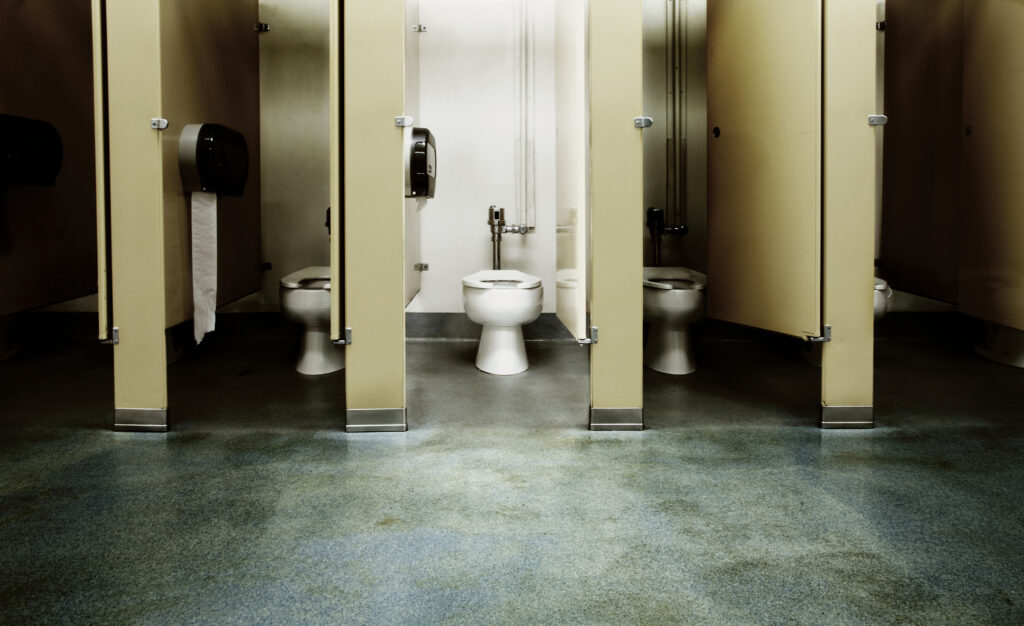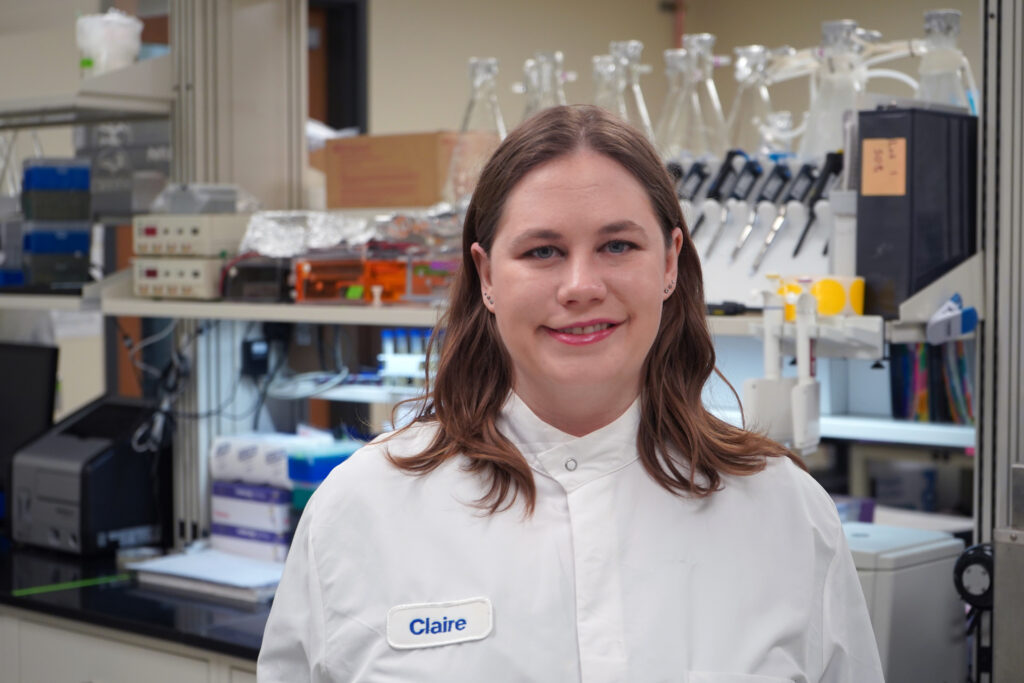Keep Up to Date with MDG
MDG News and Updates

SporActiv® Bacillus Reduces Odor Caused by Uric Acid
Unlock the secret to a fresh and clean bathroom experience for your customers with MDG’s SporActiv® Bacillus. What is Uric Acid? Uric acid, one component found in urine, forms a solid crystalline salt residue that can build up on bathroom surfaces over time. This buildup can be difficult to remove and trap unwanted odors. With the help of SporActiv® Bacillus products, you can help stop the problem. Backed by our Real Science, Trusted Process, and Proven Success, SporActiv® Bacillus is effective in breaking down uric acid, paving the way for a cleaner, more hygienic space. SporActiv® Bacillus Research At MDG, Real Science matters; it is our foundation. Discover the science behind SporActiv® Bacillus and its ability to persist on surfaces, continuously metabolizing uric acid long after application. Our findings, highlighted in our research document below, showcase the superior performance of SporActiv®. Ready to transform your customers’ bathroom maintenance routine? Get in touch with one of our experts to learn more about microbial based cleaning solutions. CONTACT US

Clean Ingredients for Cleaning Products
Over the past decade, clean ingredient incentive groups worldwide have taken a hard look at manufacturers of products used for Industrial, Institutional, and Consumer (IIC) cleaning and the environmental impact these products elicit. Many commodity ingredients of the past decades have experienced a great deal of scrutiny and limitation in use as of late. Some of these may look familiar: Nonylphenol ethoxylates Phthalates Harsh caustics and acids Phosphates Harsh chemicals Silicates Solvents These are just a handful of types of ingredients that were formerly used in abundance but now have experienced restrictions by many environmentally conscious agencies. Manufacturers and distributors in the IIC sector are grappling with finding environmentally friendlier alternatives to these ingredients. There is a need for cleaning ingredients with a lower bioburden, to bridge the gap between the effective products of yesterday, and the cleaner products of tomorrow. Amidst the increasing restrictions on ingredients used in cleaning products, Bacillus has emerged as a unique and effective solution. To say that “Bacillus is biodegradable” is a gross underestimation of the power of Bacillus. Bacillus is the “Biodegrader”, excelling at addressing stains by digesting and eliminating organic materials at their source. In formulating cleaning products, it is worth considering laws and regulations regarding […]

Under the Microscope, MDG’s Director of Research & Development: Sona Son
Sona Son is one of Microbial Discovery Group (MDG)’s first employees and was hired back in 2008. Her role has evolved over the past decade, but her passion remains the same: utilizing real science to solve real problems. 1. What drew you to Microbial Discovery Group? I joined MDG in 2008 as a recent college graduate. Back then, the building was still under construction, so I had to wear a hard hat on my first visit. The conference room where I was interviewed did not even have a conference table – only two folding chairs and a whiteboard! I was drawn to MDG because of that – the opportunities to make an immediate impact and continue to learn and grow. Most of all, I was inspired by Mike King’s passion and enthusiasm toward research and the company’s future potential. 2. What does your typical day look like? This can really vary! In my role, I work across departments and have the opportunity to make a difference on a daily basis. I spend a good portion of my time in meetings where I focus on everything from big picture items to day-to-day challenges. Between problem-solving both short and longer-term R&D ventures, […]

Under the Microscope, MDG’s Wastewater Technical Support Specialist: Josiah Menako
Under the Microscope this month is Josiah Menako, MDG’s Wastewater Technical Service Specialist. Josiah plays a key role on our wastewater treatment team by specializing in servicing and educating our distribution partners for success! 1. What drew you to Microbial Discovery Group (MDG)? While in school, I was working in several research labs and I strongly desired to continue that professionally. In my mind it is the coolest job. I’ve been a scientist at heart since I was a kid. The story of how I specifically got to MDG is pretty unique. I worked at Panera all though high school and a bit during college. A few times a week, I would take the order and make the food for Mike King, his wife Sharron, and their two daughters. Little did I know, Mike was writing the business plan for MDG while he was there. As I got to talking with him more and more, I mentioned that I was going to school for Microbiology and he told me to give him a call someday. One year before graduating, I decided it was time to give him a call and the next thing I knew, I was an intern doing […]

Do Something: An Inspiring Day
We had an unexpected and wonderful guest last week! My family and I volunteered to escort the chart topping Christian singer Matthew West to a very special concert at the Milwaukee County House of Correction, an important stop before his show at the Wisconsin State Fair Grounds later that night. At the House of Correction, his lyrics touched the hearts of those in attendance. FOX 6 was there to capture it all, and Matthew shared with them, “No matter how messed up this stage of your life might be, this does not have to define you.” After the show, I shared how his song “Do Something” had played a role in creating our Feed, Clean, Save vision, as we also hope that we can make an impact in someone’s life, doing more than just being a business. To our surprise, he was excited to learn more about our efforts. Since we were less than a mile from our Franklin office, we invited him to stop by and talk more. While he was here, he shot a personal video message to one of our employees, who was also inspired by his songs and is currently doing mission work in Haiti. It was such an inspiring day and I will […]

Under the Microscope: MDG Blending Technician, Bob Pustejovsky
Under the Microscope is a member of our Blending Operations Team, Bob Pustejovsky. Bob is one of the team members working in our new facility in Oak Creek, WI and is one of the last employees to handle the very products that leave our shipping docks before arriving at our customer’s location. 1. What drew you to Microbial Discovery Group? I wasn’t very happy with my previous line of work and was looking to try something completely different. Everything that I had heard about MDG sounded awesome, and I really liked the idea of having a more physically active job instead of just sitting around all day. 2. What does your typical day look like? Most days I’m putting together formulas for either liquid or powder blends. I’m weighing out ingredients and loading them into the mixers to spin. After everything is nicely blended, I collect samples of the formula and we send them to our friends in the lab. They test the samples to ensure we have a quality product and if everything looks good I package and ship it off to our customers. 3. What are you working on right now? Now, I’m getting ready to grind up […]

Under the Microscope, MDG’s QC Microbiologist: Katie Pernic
Under the Microscope is one of our Quality Control Microbiologist, Katie Pernic. Being the first designated QC microbiologist at MDG, Katie has played a pivotal role in the development of our QA/QC processes. 1. What drew you to Microbial Discovery Group? When I joined MDG in 2012 it was a very small group of about 10 people, but I could tell right away that MDG was aiming for higher goals. There was (and still is!) a lot of opportunity for growth, and I thought my prior experience in QC would help the company to grow as well. 2. What does your typical day look like? My mornings are spent reading and reporting results from the previous day’s plates, performing short tests such as enzyme assays, writing reports, or setting up materials for testing later in the day. The main chunk of our work is done in the afternoon once all QC samples have arrived; this might consist of things like plating the samples for count, performing DNA extractions, PCR, or running gels. 3. What are you working on right now? I am currently helping to train a new employee, writing a report on some proof-of-concept testing from last week, comparing […]

Under the Microscope, MDG’s Research Microbiologist, Claire Heile
Research Microbiologist, Claire Heile, has taken our Feed, Clean, Save initiative to the next level by dedicating her entire research efforts to environmental conservation. 1) What drew you to Microbial Discovery Group? I believe that our shared goals to find microbial solutions to world issues (specifically pollution) drew us together. MDG recognized and supported my determination, becoming the catalyst to bring these goals to fruition. 2) What does your typical day look like? My typical days are rather atypical; I have a variety of responsibilities that make every day unique and interesting. 3) What are you working on right now? I am currently gathering data for two patents, operating a lab-scale landfill simulator, isolating/identifying/testing new Bacillus sp., running chemical/molecular tests, creating/implementing new procedures, contributing to documentation needed to import our Bacillus to other countries, processing/analyzing data, preparing for a discussion with landfill industry leaders, organizing a blood drive and beach clean-up with our Feed Clean Save program, working on posters to present at upcoming conferences and constructing a digital library/database. 4) What is the most inspiring part of your job? The most inspiring part of my job is having the opportunity to find solutions to global challenges that impact […]

Under the Microscope, MDG’s Fermentation Manager, Brian Rehak
It takes quality people to make quality products; that’s why MDG invests in passionate people like our Fermentation Manager, Brian. 1) What drew you to Microbial Discovery Group? I left the job I was at for 13 years to come here. I needed something new and exciting. Returning to school was not an option at that point in my life. I was lucky enough to find MDG and they took a chance on me. 2) What does your typical day look like? Insanely busy… On any given day I could be loading tanks, cleaning separators, loading or unloading freeze dryers, cleaning tanks, harvesting tanks, maintenance around the plant, keeping up on GMP paperwork, filling out tank paperwork, switching over tanks to begin new runs, making sure addition cans are ready for use, having enough addition cans in rotation, etc. etc. 3) What are you working on right now? At this moment it is tank reload, sterilization and separator cleaning. 4) What is the most inspiring part of your job? Accomplishment, problem solving and results. 5) What is your favorite aspect about working at MDG? Nothing is ever the same. There are new challenges and new obstacles […]

Reflecting on a Decade of Success
If you are anything like me, the sands of time are moving pretty fast these days. It seems only a moment ago I was loading my little ones on the school bus and then hunkering down to work diligently on a business plan, humbly seeking support for this dream of MDG to become a reality. Fast forward and in the blink of an eye, I find myself penning a message in celebration of MDG’s 10-year anniversary, a dream fully realized, and my oldest is in college and my youngest is driving. No doubt this has been a remarkable season of growth with so many “firsts”, so many special moments, and so many blessings. As I look back on this past decade, I feel so fortunate and humbled to reflect on the amazing relationships that have been built, our culture, our shared values, our incredible “why” that gets us out of bed each day, and our passionate pursuit to explore all of what’s possible in the world of microbial discovery. Amazing Relationships While you set out to conquer the world by starting a business, then quickly move to outrun failure, along the way you receive the enrichment of the relationships you build. Our […]